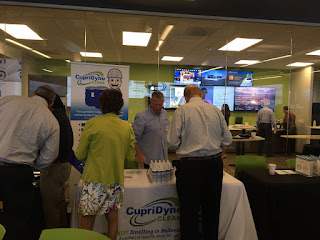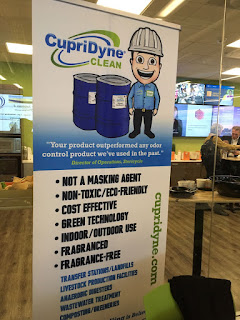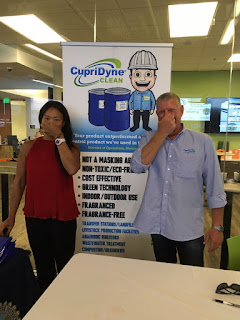Albertan Oil Sands deposits in
Canada cover a surface area of over 140 000 km2 and represent major
value for Canada as quantified in Figure 1. These deposits are a mixture of
bitumen, clay, moisture, and sand. Bitumen extraction requires on average of
3.1 barrels of freshwater for every barrel of oil produced. Water is drawn from
the nearby Athabasca River and the processed water is then stored in large
tailings ponds shown in Figure 2. The environmental risks and the high costs
associated with wastewater storage and onsite maintenance onsite represent major
challenges to industry, regulators, and stakeholders. The oil sands process
waters are different from other conventional Oil & Gas process water. It is
still extremely toxic, however, not all OSPWs are similar in complexity and toxicity.
Different organic compounds
contribute to toxicity of OSPW. Naphthenic Acids (NAs)and polyaromatic
hydrocarbons have been identified as toxic components in OSPW. Toxic effects of
NAs are due to composition more than concentration. These compounds can damage
nearby aquatic ecosystems upon their introduction, and it is therefore
imperative to identify suitable protocols for the treatment of OSPW.
 |
|
Figure 1.
Value of energy to Canada up to 2009
|
The AOS
has the potential to introduce cost-efficient treatment of oil sands
process-affected water as compared to conventional methods. It has a proven
efficacy in eliminating naphthenic acids and polyaromatic hydrocarbons from
synthetic water at significantly low energy consumption than competitors.
BioLargo Water recently submitted a full project proposal for the Clean Growth
Program in collaboration with two of the biggest oil sands companies in
Alberta. This project will validate the AOS’ ability to remove these
contaminants from real industrial OSPW in laboratory and field-simulated
settings and will establish proof-of-claim evidence of the AOS’ ability to
remediate OSPW. This will present a huge market opportunity the AOS as containment
of OSPW in tailings ponds in Alberta is anticipated to reach more than 1
billion m3 of water by 2025. By 2040, these tailings are expected to occupy 310
Km3, an area nearly the size of Vancouver. Given the large volume of water in
these ponds and possible leaching of toxicants to nearby environment, the
importance of OSPW treatment is extremely high.
 |
|
Figure 2.
Tailing pond beside the Athabasca river
|
What is a BioLargo
Spotlight?
It’s an exciting time
at BioLargo. We’re moving fast, and it can be difficult to keep our
stockholders and the investing public informed of our progress. In light of
this, we will be posting a series of short articles titled “BioLargo
Spotlight”, highlighting certain business activities and other important
information in between our required SEC filings. Of course, these do not replace
our public filings, which contain more complete information than can be
delivered in this forum, and thus we urge you to carefully read and rely on
those filings for definitive information, and to review our risk factors and
caution regarding forward-looking statements. We are optimistic about our
business as we work hard to continue to grow and ultimately generate profits
for our stockholders.
Legal Disclaimer
Our attorneys remind
us that while we believe these developments are important and that these small
victories could add up and lead to big victories, at this stage they do not
rise to the level of an official material disclosure. As the size and magnitude
of these developments become material, we will naturally report that
information in an 8-K and our regular SEC filings.






